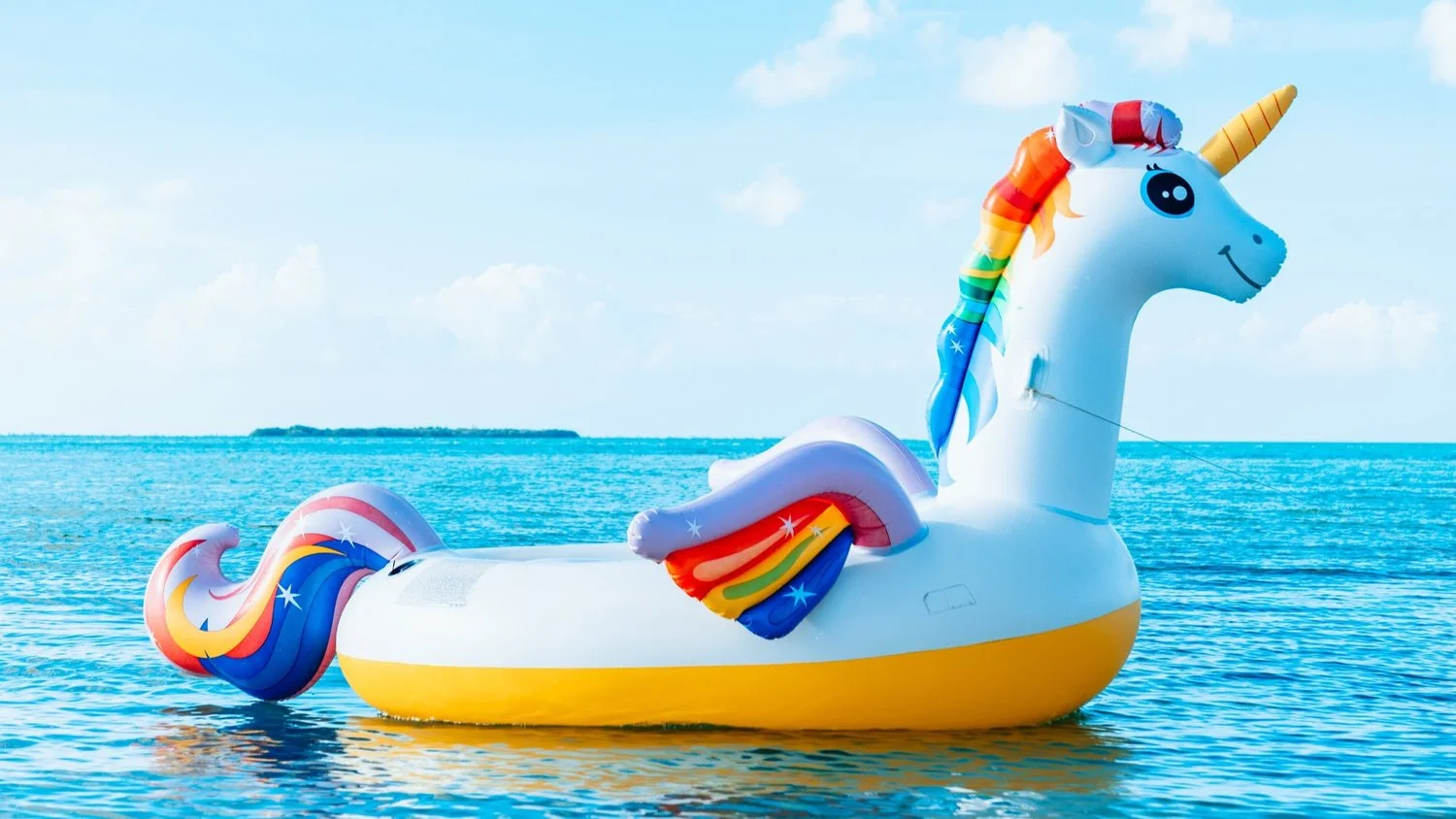If you’ve been in my orbit for any amount of time, you’ve likely heard me talking about systems. And more than any other system, you’ve heard me talk about a single trusted system for your tasks.
And if you’re like a lot of folks, perhaps you’ve tried to use a task system in the past, found it to be too much work, or found that your enthusiasm for using such a system waned after a couple of weeks. As a result, you abandoned your system and now you’re back to your old methods. The old ways aren’t serving your particularly well, but they’re comfortable.
But here’s my take: Any work that goes into your system, comes back to you in spades. AND, that maintaining your system is way less work, for way more reward, than you might think.
When I think of my system, I imagine a big fat inner tube on a lazy river. And me? I’m just lounging on top.
Let me take this metaphor a step further: Think about how you get to the position of being on top of the inner tube. First, you have to blow the darn thing up. And yes, that does take effort. You might need to step back and take a breath. And when you do, perhaps some of that air lets out of the tube and you feel a little like “well, that last breath was useless”. Wasted energy.
But you keep the goal in mind. you want to be lounging on that lazy river with a full support beneath you. So you keep going. And with a little more effort, you blow that whole tube up.
You climb on top.
Now, you get to reap the rewards of your effort.
Once that inner tube is blown up, and you’re sitting on top, everything’s easier. You’re floating above the water. You have a better view of the bends in the river ahead so you can anticipate where you need to steer. You’re no longer treading water, trying to keep your head above water.
You have built yourself a buoy.
Will that buoy lose a little air sometimes? Probably. But it won’t take so much effort to open up the valve and blow in a few more breaths to get it nice and full again.
Will it spring a leak? Maybe. But that’s OK. You can patch it.
What if it goes completely flat? Well, while it’s not ideal, and it will take a bit of effort to get it full again, you know what to do and how to do it. And next time, you’ll be a bit more careful to close the valve and preserve the air inside.
This inner tube is your task system.
When you’ve got everything you need to do all in one place and when you’ve prioritized by when you’ll do these things, your head is above the metaphorical water. You’re floating along just doing the things, having separated the planning from the doing. And you can see what’s up ahead and adjust and pivot as needed. All of a sudden, being in the water just isn’t as hard as it was before. Because you’ve built your supports.
So, once you’ve taken the effort to build your system, how can you make sure it stays afloat with minimal effort? Here are a few strategies bound to keep you out of the depths.
- Ensure your system is complete – If your system only contains some of what you need to do, it’ll be difficult to prioritize because you’re working with partial data. Make sure your system contains it all.
- Make it convenient – Use a task app that syncs everywhere (your computer, your phone, your iPad) and spend a few minutes setting up any integrations that will make it easier to use (email, Slack, Alexa, Google Home, browser extensions, etc.). Put the app on the home screen of your phone. Set up voice entry.
- Update as you go – Do a task, update the task, move onto the next task. The best way to ensure your system remains supportive is to never think of it as something you have to update. If you only look at your task system once a day, or once a week, then it’s a mere repository. It’s dragging you down instead of lifting you up. If “update my task system” is a task in your task system, you’re in a losing battle. You want your system to be the engine propelling you forward, the wind beneath your wings. (Let me just try to get every possible metaphor in here. Ha!) And the low-effort way to make that happen is to have it open all the time and update as you go.


